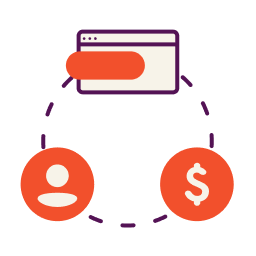A robust economic recovery and a recession that didn’t materialize along with the promise of lower interest rates means 2024 could shape up to be a year of opportunity for small business owners who act strategically in 2024.
Here’s what you need to know about small business financing in the coming year.
What Happened in 2023 in Small Business Finance
Rising interest rates, post-pandemic business growth challenges, commercial real estate woes, and new regulations dominated small business financing news headlines in 2023.
Despite the challenges, America isn’t giving up on entrepreneurship.
The White House announced that Americans filed a record 14.6 million applications to start new businesses. Additionally, the business ownership rate among families has risen 9% since 2019, with particularly strong gains for Hispanic and Black households.
The U.S. Small Business Administration provided $50 billion in capital to small businesses nationwide, partnering with lenders to approve a record $34 billion in small business loans through its two flagship SBA loan programs: 7(a) and 504 loan programs.
SBA lending to traditionally underserved groups has also increased:
- Loans to minority-owned businesses have increased from 23% to over 32% since 2020 (as a share of the loan portfolio).
- Loans to women-owned businesses exceeded $5 billion in 2023.
- More than $1 billion in SBA loans went to veteran-owned businesses in 2023.
The amount of outstanding small business debt has increased, though lending by traditional lenders has slowed, according to the Kansas City Fed.
What Small Businesses Should Know About 2024
- The Fed is expected to cut interest rates, rather than raise them. Since most small business loan rates are sensitive to interest rate changes, this could make borrowing more affordable.
- SBA loans will become more widely available through non-bank lenders.
- More lenders are either required to, or voluntarily, disclosing the cost of small business financing using Annual Percentage Rates (APRs).
- Crowdfunding will continue to provide loans and investment capital to small businesses, and in particular bring more opportunity to borrowers who have traditionally found it more difficult to raise capital.
- The SBA will more actively pursue defaulted COVID-19 Economic Injury Disaster Loan (EIDL) balances obtained during the pandemic starting in the spring of 2024, according to The Washington Post.
Other changes that will affect small businesses:
- Proposed rules by the Department of Labor, if finalized, will guarantee overtime pay for more salaried employees.
- New Corporate Transparency Act reporting requirements will require many new and existing businesses to file reports with FinCEN or face a hefty fine.
- The opportunity to repay questionable Employee Retention Credits (ERCs) at a discount (expiring soon!)
Let’s dive deeper into some of these upcoming changes.
Lower Interest Rates Are Likely Coming
The Federal Reserve raised their key interest rate 11 times in 2022–2023. While it’s impossible to predict exactly what the Fed will do in 2024, the overall consensus is that rate cuts are coming in 2024.
Not only will lower rates help entrepreneurs who may want to get new small business loans, or refinance existing business loans, it can also give consumers breathing room in their budgets, which in turn can help stimulate the economy for business owners who serve those consumers.
New Lending Regulations for Small Businesses
Until very recently, lenders and financing companies didn’t have to disclose the cost of small business loans or financing using an Annual Percentage Rate (APR), which is typically required for consumer loans. Instead they often had to rely on calculators to help translate the cost of certain types of financing (like merchant cash advances) to an APR.
But this is rapidly changing. Connecticut, Georgia, Florida, New York, California, Utah, and Virginia have passed laws that require certain disclosures for commercial financing transactions to businesses, typically— though not always— by requiring the cost of financing to be described using an APR.
Some lenders aren’t waiting for every state to pass these regulations; they are disclosing APRs now wherever they do business.
As a result, it will often become easier for small business owners to compare the cost of various types of financing.
New Small Business Association (SBA) Rules
The SBA loan program includes several types of SBA loans:
- 7(a) loans
- Express loans
- CDC 504 loans
- Microloans
- Export and International Trade Loans
- Community Advantage loans
- Disaster loans
The SBA is making changes to some of their key programs that should positively impact small business owners looking for these types of loans.
One major change is that the SBA will expand the number of lenders who can offer SBA-guaranteed loans, providing small businesses with more options.
With the exception of SBA Disaster Loans, borrowers don’t get a loan from the SBA. Instead, they get the loan through a lender approved by the SBA. Traditional financial institutions, like banks, have made the majority of these loans. Microloans and 504 loans also include nonprofit lenders such as Community Development Financial Institutions.
A new rule will expand the number of lenders approved for Small Business Lending Company (SBLC) licenses.
There will also be a new Community Advantage SBLC license, expanding a pilot program that has a proven track record by nonprofit lenders of making higher rates of loans to Black, Hispanic, women, and veteran-owned businesses.
The SBA has also announced it will be “modernizing the lending criteria and conditions for SBA’s business loan programs and reducing red tape for SBA lenders.” While SBA loans are known for their borrower-friendly loan terms and competitive interest rates, the application process can be daunting.
To that end, new rules will make it easier for lenders to make small dollar loans ($150,000 or less) and streamline paperwork so they can make SBA loans more quickly and efficiently.
Crowdfunding Creates Opportunity
Entrepreneurs looking for investors no longer have to limit their search to friends and family, angel investors or venture capital firms. Instead, crowdfunding is opening up myriad funding opportunities.
“The big story is definitely the increased number of successful debt Reg CF offerings,” says Kathleen Minogue, Founder and CEO of Crowdfund Better. “With interest rates up and lenders tightening their loan criteria, more businesses turned to their communities for capital.”
She also notes that early data indicates “what many of us already suspected about crowdfunding…that companies that use it are more resilient than the average and stay in business.”
Some 70% of Regulation Crowdfunding (RegCF) campaigns succeed, and firms that raise capital this way have a much higher rate of success than new businesses at large, according to CClear.AI.
More Small Business Changes To Watch Out For
Here are some other important changes affecting you’ll want to to make sure are on your radar:
DOL Overtime and Wage Rule Changes
The U.S. Department of Labor has proposed updates to key wage rules, and is expected to make final rulings in 2024. Changes could significantly affect small business payroll in the coming year. The proposed rule would guarantee overtime pay for most salaried workers earning less than $1,059 per week, about $55,000 per year.
The DOL expects it to affect some 3.6 million workers.
DOL is also proposing a requirement that the salary threshold be updated every three years to reflect current earnings data. It would also protect workers in U.S. territories.
Fincen
Small business owners should be aware of new requirements to disclose information about beneficial owners—the persons who ultimately own or control a business—to FinCEN (the U.S. Department of the Treasury’s Financial Crimes Enforcement Network) beginning on January 1, 2024.
An existing company that is required to report will have until January 1, 2025 to do so. Startups have less time. company that is required to report and is created or registered on or after January 1, 2024, and before January 1, 2025, will have 90 calendar days after receiving notice of the company’s creation or registration to file its initial report.
Read: The New Law No One Is Talking About
ERC Voluntary Payback
Small business owners may have been lured into getting questionable Employee Retention Credits (ERC). Unfortunately aggressive marketing led businesses to apply, even if they were not good candidates for this tax credit.
The IRS is giving employers up until March 22, 2024 to pay this money back or withdraw claims, with provisions allowing repayment of 80% of the claim received. Installment payments may be allowed.
How Are You Managing Your Small Business Finances in 2024
Whether you’re just getting started with your new business, or you’re focused on business growth in 2024, managing your small business finances will be one of the key factors in whether your business prospers.
A new year is a great time to review and update your business plan. And since you’ll also be preparing to file business taxes, it’s also an ideal time to review your business finances and take a careful look at where you may be overspending or underinvesting in your business.
It’s also a good time to line up short-term financing like a line of credit or business credit card, to help smooth out cash flow or to make sure you have the working capital you need to take advantage of the opportunities that arise.
In times of uncertainty, having access to small business credit options can allow you to focus on growing your business, rather than scrambling to figure out what type of financing your business needs.
How Nav Can Help
Nav can help your business if you:
- Need to find a small business loans based on your qualifications,
- Want to save money by refinancing business debt,
- Are shopping for the best business credit card,
- Want easy-to-use tools to improve your cash flow, and
- Need to establish business credit and/or build strong credit scores.
Nav’s easy-to-use tools and comprehensive resources can help your business every step of the way.
This article was originally written on January 8, 2024.



Have at it! We'd love to hear from you and encourage a lively discussion among our users. Please help us keep our site clean and protect yourself. Refrain from posting overtly promotional content, and avoid disclosing personal information such as bank account or phone numbers.
Reviews Disclosure: The responses below are not provided or commissioned by the credit card, financing and service companies that appear on this site. Responses have not been reviewed, approved or otherwise endorsed by the credit card, financing and service companies and it is not their responsibility to ensure all posts and/or questions are answered.